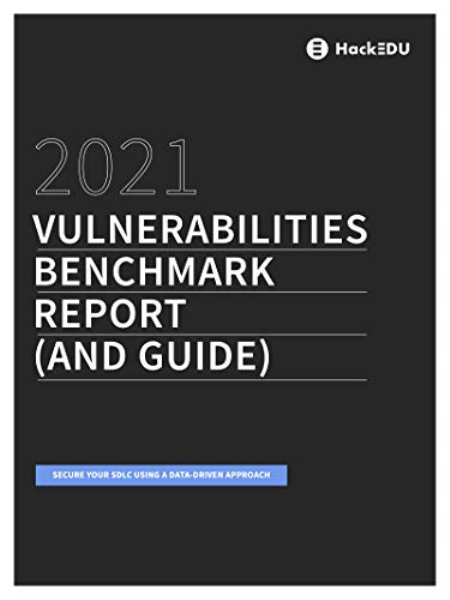
English | 2021 | ISBN-13 : 978-1647822514 | 14 Pages | PDF, EPUB, AZW3 | 9.75 MB
The Vulnerabilities Benchmark Report is a synthesis of anonymous data from tens of thousands of software developers on our training platform, representing hundreds of companies across multiple industries.
During the process of developing the report, we were stunned by some of our findings.
One example is the fact that injection vulnerabilities have been either #1 or #2 on the OWASP Top 10 for 14 years! When we dug into the reasons why the statistic has remained unchanged for as long as it has, it made a lot more sense. Injection vulnerabilities are the ones that are most often fixed incorrectly. So while development and QA teams may think that they've taken care of a weakness in their software after it's initially flagged, the reality may be different.
Another startling discovery we made is that the most problematic vulnerability reported by our customers is the use of components with known vulnerabilities. It seems counterintuitive that companies would continue to use software components that they know have vulnerabilities. When we delve into the realities of the contemporary development lifecycle, however, we b to understand why it's a problem, and why it could remain an issue for a while.
Development teams are under increasing pressure to deliver more code, more quickly, than ever before. A Dimensional Research report titled "The Emergence of Big Code" states that over 50% of developers surveyed say that today, they have to work with 100x the volume of code that they had to work with ten years ago, and 90% of them report that they are under pressure to release code faster than ever before. Using open source or third party code components is a common solution to the problem of doing more with less . Since this demand is unlikely to change (and likely will get worse), the use of pre-packaged code will likely persist.
The problems associated with shorter software development lifecycles can manifest themselves in numerous ways. For the developers behind open source and third party components, it could mean delays in developing and releasing patches to fix vulnerabilities because they're focused on their roadmap. For the programmers who rely on these components, it may mean being slow to implement the patches or software upgrades because they lack the to do it. Both scenarios propagate the status quo.
A Common Theme
While our report explores various perspectives on the topic of vulnerabilities, one common theme that stood out to us during our analysis was that the vast majority of these vulnerabilities would not have existed if the developers were properly trained in secure coding practices. Developers either did not know that the code they wrote contained vulnerabilities, or did not know how to properly patch the vulnerabilities that were discovered by their automated security tools or security team. We did some additional research in an attempt to find the root cause for this gap in knowledge, and discovered some interesting information.
DOWNLOAD
uploadgig
rapidgator
nitroflare

